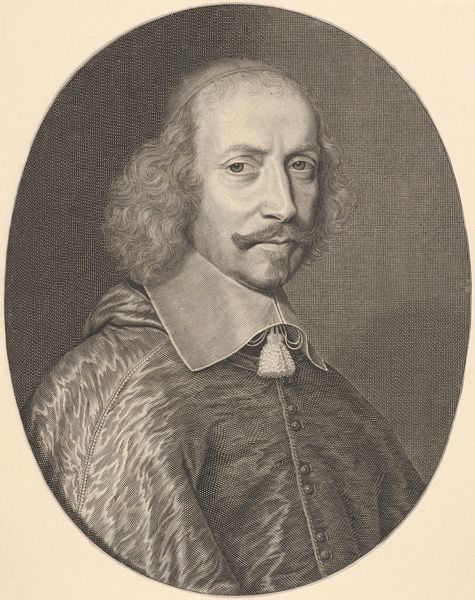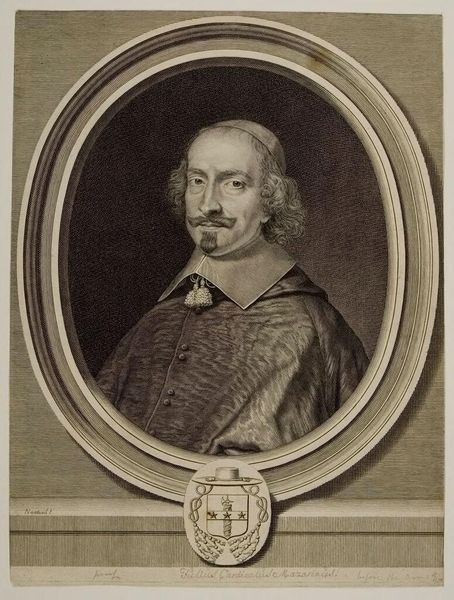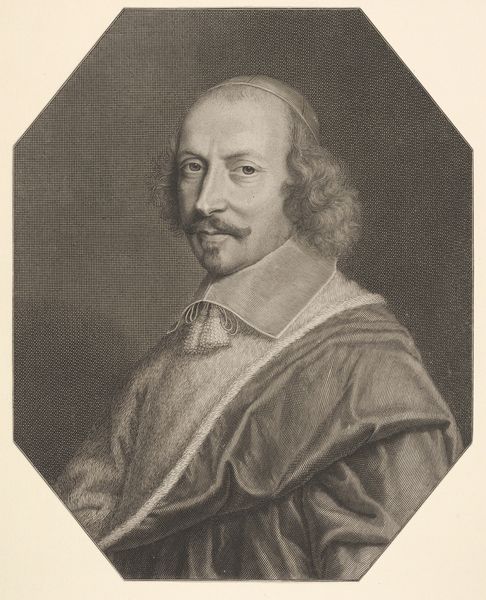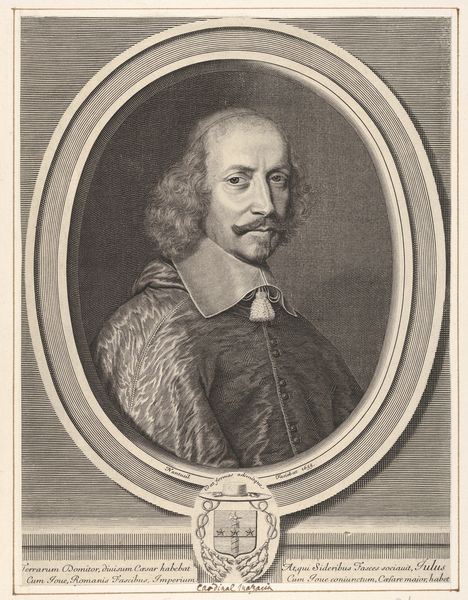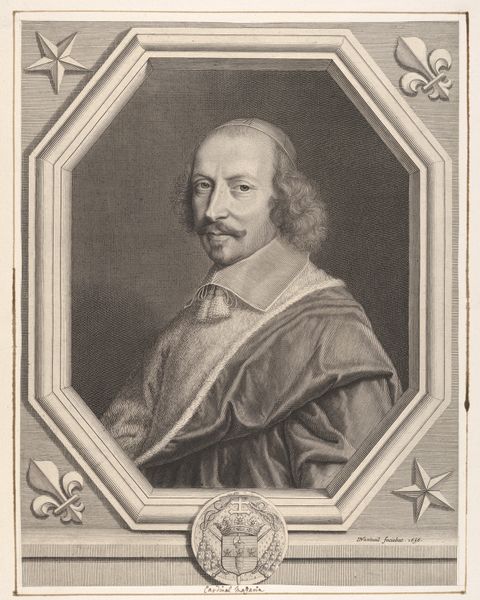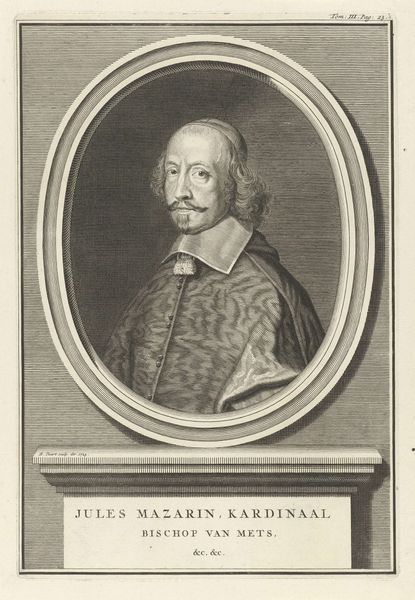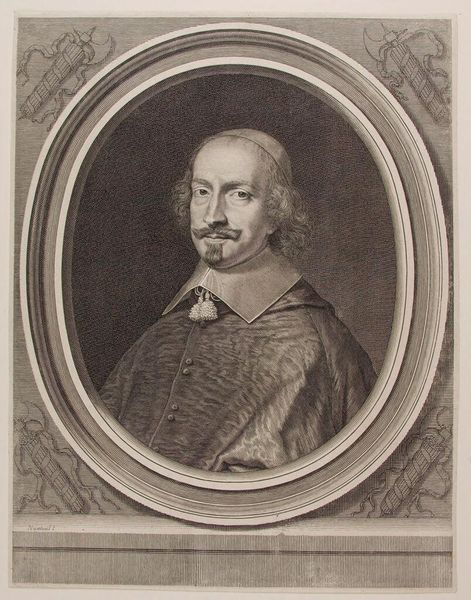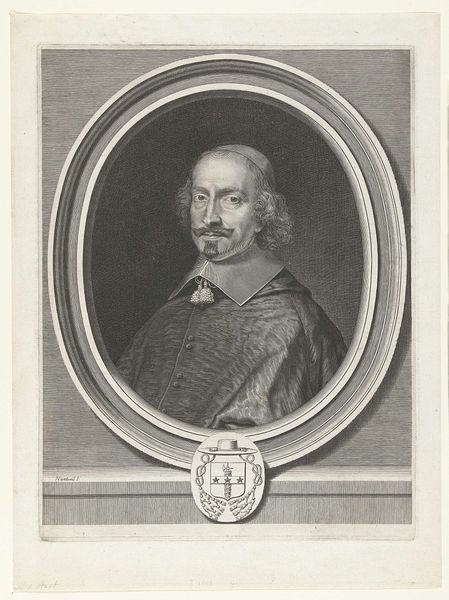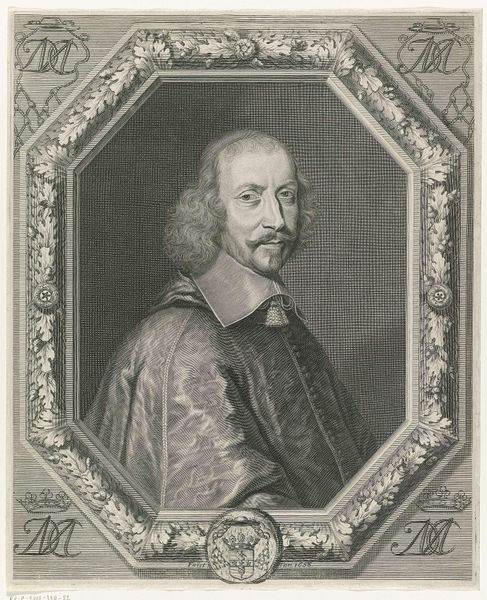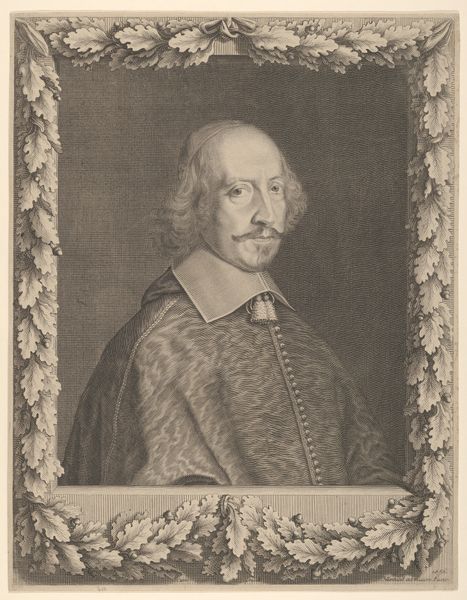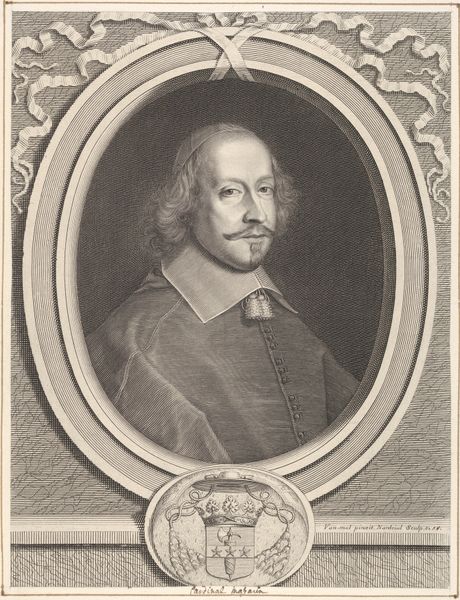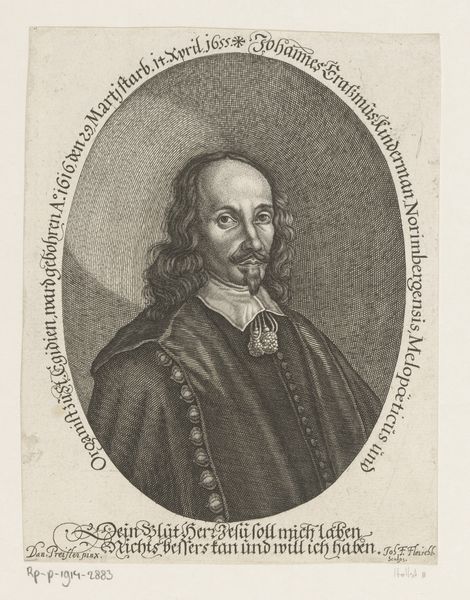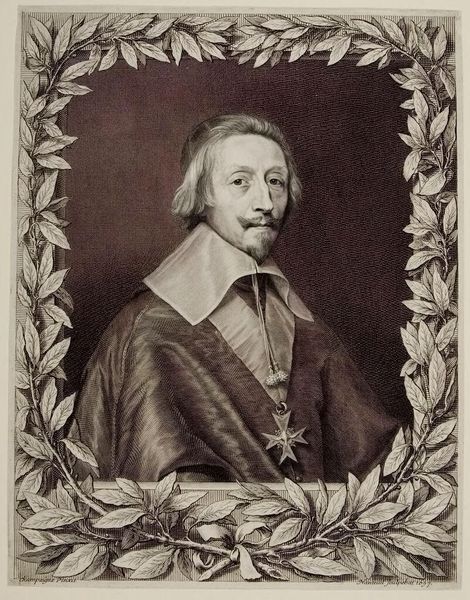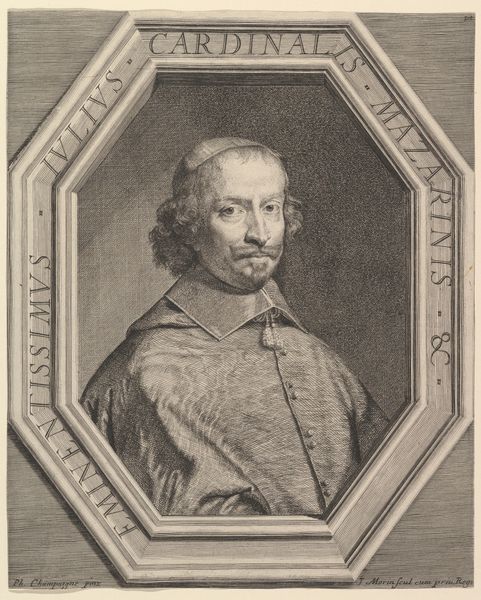
drawing, print, metal, engraving
#
portrait
#
drawing
#
baroque
#
portrait image
# print
#
metal
#
men
#
portrait drawing
#
engraving
Dimensions: Sheet: 8 15/16 × 7 1/16 in. (22.7 × 17.9 cm) trimmed
Copyright: Public Domain
Curator: Looking at this portrait of Cardinal Jules Mazarin by Robert Nanteuil, created sometime between 1647 and 1657, one is immediately struck by the intense detail captured in the engraving. The medium really brings forward an interesting approach to portraiture. Editor: He looks rather shrewd, doesn't he? The artist has captured an almost unsettling degree of control in his gaze, a knowingness. It is interesting to wonder about how a historical figure has become captured through images and how their legacy is preserved by those images. Curator: Nanteuil was a master of metal engraving, wasn't he? Considering the time, each line on this copper plate represents countless hours of highly skilled labor. We have to think about workshops, materials, patronage. Who commissioned this and what purpose did it serve? Editor: Absolutely, but think about what Cardinal Mazarin *meant* to France and its Church, during that tumultuous period. Those tassels at his collar; his gaze, as I mentioned, how they communicate authority and piety. We read the symbolic weight through these signs, as the embodiment of an establishment clinging to power. Curator: The printmaking process itself offers intriguing insight. Multiple impressions could be made from a single plate. Was this designed to disseminate the Cardinal's image widely? What impact did that have on popular perception? Was it effective propaganda, perhaps? I find myself asking how prints made this way change the notion of the original or unique work. Editor: These repeated images certainly bolstered Cardinal Mazarin’s symbolic reach, fixing his presence within the popular consciousness. Look at the composition. That oval framing contributes to that almost otherworldly timelessness that rulers sought. These visual patterns, like that knowing gaze we talked about, reinforced the symbolism of high religious rank and the enduring, untouchable power. Curator: Seeing this portrait framed from that materialist perspective reveals a network of skilled labor, material economies, and calculated dissemination. The engraving itself functions as a fascinating document of 17th-century production. Editor: Indeed. By tracing those iconographic threads, however, we come to understand not just what was depicted, but *why*. This work is the legacy itself and tells of our history, as seen through an emblem of a figure frozen by the engraver’s craft.
Comments
No comments
Be the first to comment and join the conversation on the ultimate creative platform.
